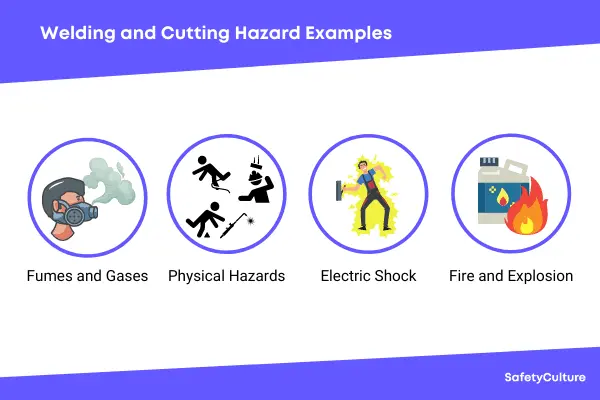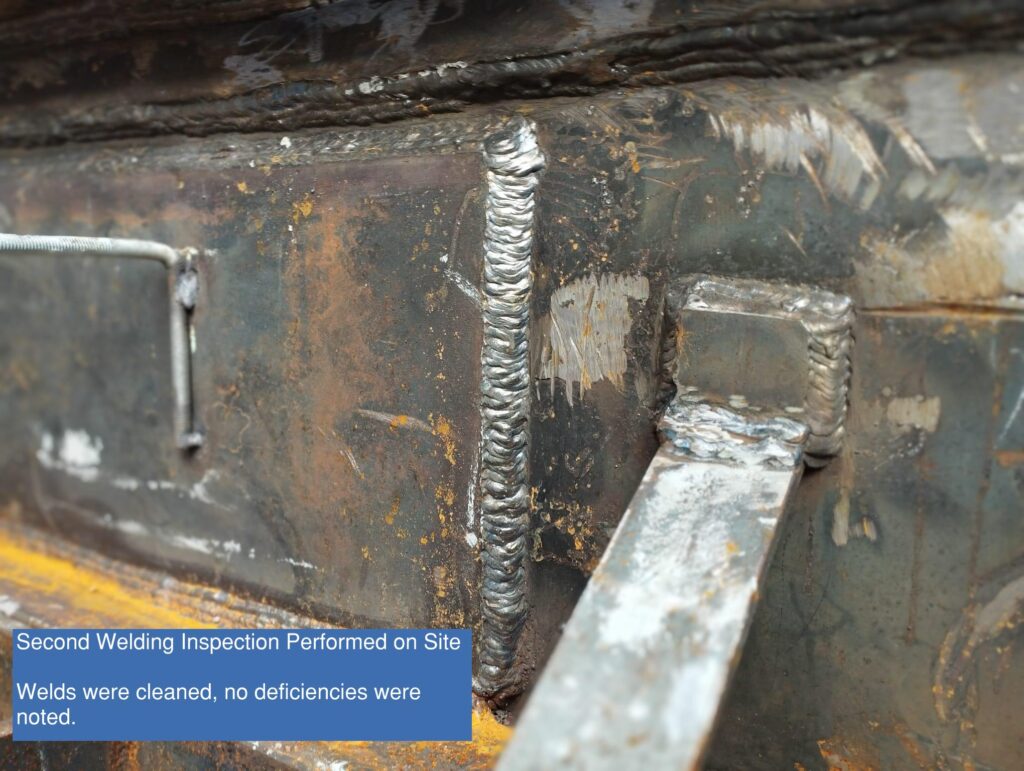The Ultimate Overview to Welding Inspection Racine for Industrial Standards
Ingenious Techniques to Fillet Weld Examination and Screening: Enhancing Weld Top Quality and Conformity Standards
In the world of welding, the high quality and integrity of fillet welds play a critical duty in guaranteeing the structural strength and reliability of numerous industrial components. With the continuous drive for improved performance and conformity with strict standards, the expedition of ingenious techniques to fillet weld inspection and screening has become critical.
Advanced Non-Destructive Screening Techniques
Making use of cutting edge modern technologies, advanced non-destructive screening methods play a vital role in making sure the integrity and top quality of fillet welds. These methods, such as phased variety ultrasonic screening (PAUT) and magnetic particle screening (MPT), deal detailed insights right into the weld's internal structure without triggering any kind of damage to the material. PAUT, for circumstances, makes use of multiple ultrasonic aspects to evaluate the weld from various angles, offering an extensive visualization of possible defects like lack of combination or splits.
In A Similar Way, MPT is effective in finding surface-breaking issues by applying an electromagnetic field and iron particles to the weld area. This technique is especially valuable for recognizing suspensions that may jeopardize the weld's stamina. By using these sophisticated non-destructive screening techniques, weld inspectors can accurately evaluate the quality of fillet welds, guaranteeing compliance with market requirements and guidelines. The capability to find imperfections beforehand not just boosts weld top quality yet additionally stops expensive rework or failings in architectural integrity, underscoring the value of these cutting-edge screening techniques in welding assessments.
Robotics and Automation in Inspection
The assimilation of robotics and automation has revolutionized the examination process for fillet welds, enhancing effectiveness and precision in quality evaluation. Robotics provide specific control and repeatability in examining welds, ensuring constant and reliable outcomes. Automated systems can be configured to follow certain inspection courses, ensuring complete coverage of welds and lowering the danger of human mistake.
Robotic assessment systems outfitted with sophisticated sensing units can detect and determine weld attributes with high precision, providing thorough data for evaluation. These systems can recognize problems such as fractures, absence of fusion, and porosity, allowing timely rehabilitative actions to be taken. Furthermore, robotics and automation permit for real-time data collection and analysis, providing prompt feedback to operators and assisting in fast decision-making processes.
Additionally, making use of robotics and automation in fillet weld assessment boosts overall productivity by decreasing examination times and increasing inspection throughput. By improving the assessment procedure, producers can make sure weld top quality and conformity criteria are fulfilled successfully, inevitably leading to set you back financial savings and boosted item quality.
Utilizing Expert System for Evaluation
Synthetic intelligence plays an essential function in boosting the effectiveness and accuracy of evaluation in fillet weld examination processes. By harnessing the power of AI, inspectors can simplify the analysis of weld quality and conformity standards, resulting in much more precise and reputable results. AI formulas can quickly process vast quantities of data from weld inspections, identifying issues or variances that may be challenging to recognize with the nude eye. This sophisticated technology makes it possible for real-time surveillance of weld high quality, enabling prompt restorative actions to be taken if any kind of problems are spotted.
Additionally, AI systems can find out from past examination data, continuously boosting their ability to determine possible defects and discrepancies in fillet welds. This flexible understanding capability boosts the overall quality assurance procedure, decreasing the probability of human mistake and making blog certain that welds satisfy the needed requirements. By incorporating expert system right into fillet weld analysis, sectors can attain higher levels of effectiveness, uniformity, and conformity in their examination techniques.
Portable Tools for On-Site Inspection
 Enhancing area examination effectiveness, the adoption of mobile devices changes on-site evaluation processes for fillet welds. These review devices use adaptability and benefit, permitting assessors to conduct extensive exams in numerous areas, consisting of tough or remote settings. Mobile tools such as ultrasonic screening devices, magnetic bit assessment devices, and digital radiography systems supply real-time data and high-resolution imaging abilities, allowing quick decision-making and immediate feedback on weld top quality.
Enhancing area examination effectiveness, the adoption of mobile devices changes on-site evaluation processes for fillet welds. These review devices use adaptability and benefit, permitting assessors to conduct extensive exams in numerous areas, consisting of tough or remote settings. Mobile tools such as ultrasonic screening devices, magnetic bit assessment devices, and digital radiography systems supply real-time data and high-resolution imaging abilities, allowing quick decision-making and immediate feedback on weld top quality.One significant benefit of mobile devices is their capability to improve evaluation procedures, decreasing downtime and enhancing total performance. Assessors can easily transport these devices to various task sites, eliminating the demand for moving hefty machinery or components to off-site centers. Furthermore, the mobility of these tools advertises cost-effectiveness by lessening transportation expenses and increasing assessment timelines.
Additionally, making use of mobile tools for on-site inspection advertises positive quality control actions, as inspectors can promptly determine and deal with any kind of prospective welding defects or inconsistencies. By incorporating these cutting-edge innovations right into on-site evaluation techniques, welding professionals can guarantee compliance with sector standards and boost weld quality, inevitably resulting in boosted structural honesty and safety in different welding applications.
Integration of Information Administration Equipment
Having enhanced on-site inspection processes via the utilization of portable devices, the following phase includes the smooth assimilation of data administration systems to better enhance effectiveness and information evaluation capabilities in fillet weld assessment and screening. Welding Inspection Racine. By incorporating data management systems into the assessment process, organizations can simplify data collection, storage space, and evaluation. This integration permits real-time monitoring of weld quality, prompt identification of issues, and prompt decision-making to correct any problems that might emerge throughout the inspection process
Data administration systems play a crucial role in centralizing evaluation data, promoting very easy accessibility for accredited employees, and ensuring information honesty and security. Via the assimilation of these systems, assessors can generate thorough reports, track historical information for fad evaluation, and enhance general process efficiency. The integration of information management systems allows seamless communication in between different stakeholders involved in the inspection procedure, promoting collaboration and boosting overall top quality control procedures. my company Eventually, the integration of information management systems offers to raise the standards of fillet weld examination and testing, ensuring conformity with industry laws and improving weld quality.
Final Thought
In verdict, innovative techniques to fillet weld examination and testing have dramatically enhanced weld high quality and conformity criteria. Advanced non-destructive testing techniques, robotics, automation, fabricated intelligence, portable tools, and information monitoring systems have actually revolutionized the method weld assessments are performed. By making use of these technologies, industries can guarantee that welds meet the needed top quality standards and regulations, eventually enhancing general effectiveness and safety and security in welding procedures.

By using these innovative non-destructive screening methods, weld examiners can properly analyze the top quality of fillet welds, making certain conformity with sector criteria and guidelines. Mobile tools such as ultrasonic testing devices, magnetic fragment examination tools, and electronic radiography systems supply real-time data and high-resolution imaging capabilities, enabling fast decision-making and prompt responses on weld high quality.
Having optimized on-site examination procedures with the usage of portable devices, the next phase entails the smooth combination of data monitoring systems to better improve efficiency and information evaluation capabilities in fillet weld inspection and screening (Welding Inspection Racine). Eventually, the integration of information administration systems serves to boost the requirements of fillet weld inspection and screening, guaranteeing compliance with sector policies and boosting weld high quality
 In verdict, cutting-edge techniques to fillet weld evaluation and screening have considerably boosted weld high quality and compliance criteria.
In verdict, cutting-edge techniques to fillet weld evaluation and screening have considerably boosted weld high quality and compliance criteria.